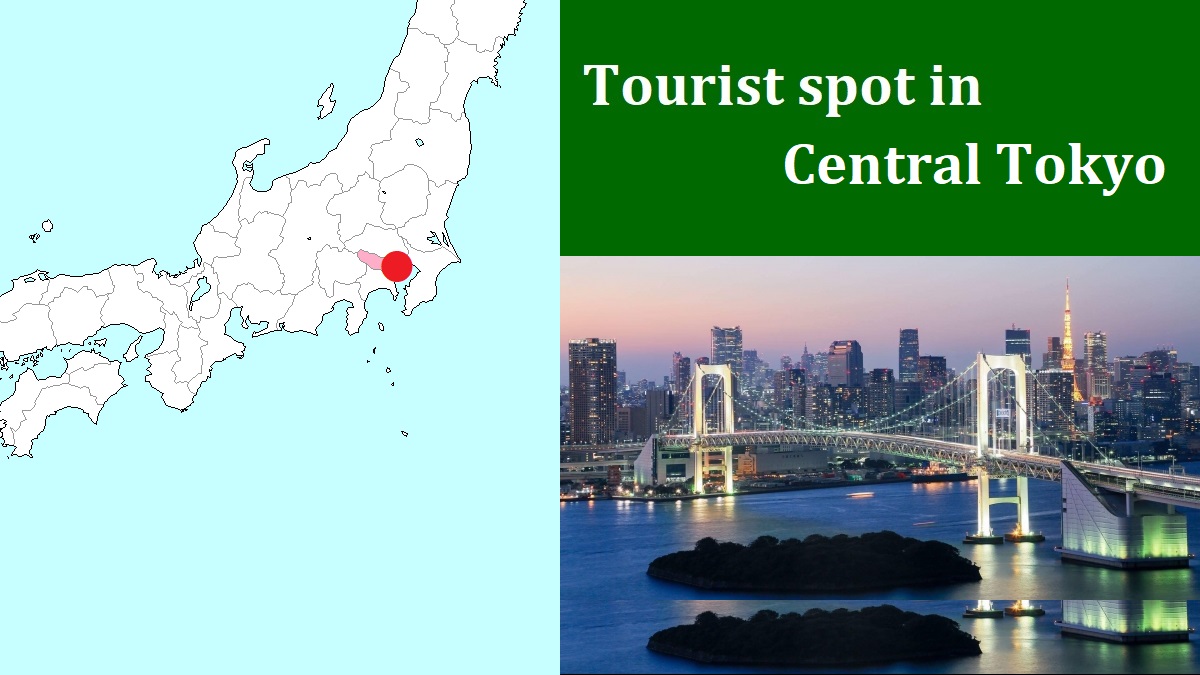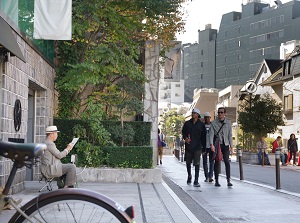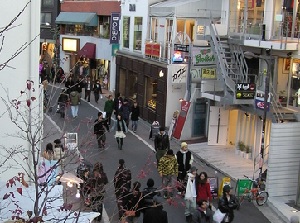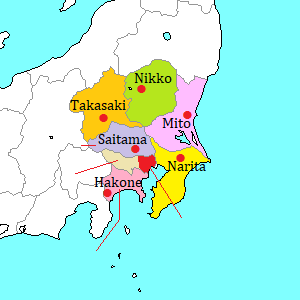Harajuku & Omotesando [原宿, 表参道]
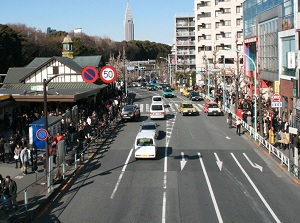
Around JR Harajuku station
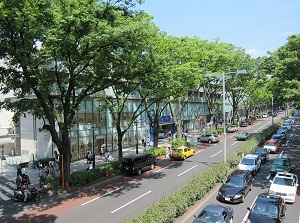
Omotesando street
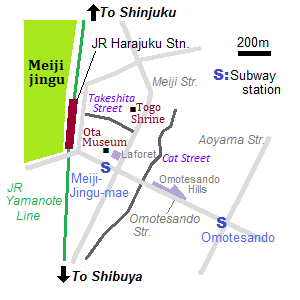
Harajuku is the eastern district of JR Harajuku station.
The southern border is Omotesandô street.
"Harajuku" is the old town name, and it had been changed to "Jingumae" as the name of administrative district since 1965.
But the name of nearest JR station has been retained, so we commonly call this area "Harajuku".
Since the 1970s, the shops and boutiques selling sophisticated and stylish clothes had been opened in this area.
And they had been introduced in new fashion magazines, then many young women had come to visit here as an interesting spot.
So Harajuku had become the center of fashion in Japan.
Since the 1980s, Takeshita street had developed with enforcement of vehicle-free promenade, then more young people come to visit here.
Since the 1990s, several flagship shops of famous foreign fashion brands has been opened.
Now here is the most fasionable town for young people in Japan.
Takeshita Street (竹下通り)
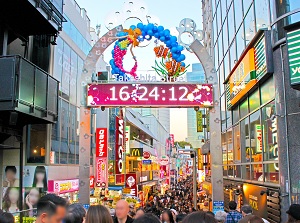
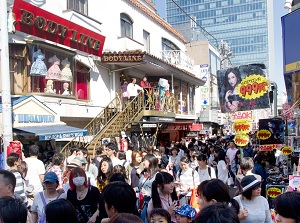
Takeshita Street is a narrow shopping street in Harajuku area.
The west entrance is near the north exit of JR Harajuku station, and the east end is Meiji street.
The length of the street is about 400 meters.
Most shops along the street are boutiques of fashion for young people.
The shops are often closed up and new shops open soon because of competition for survival.
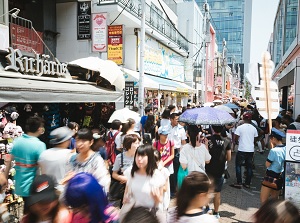
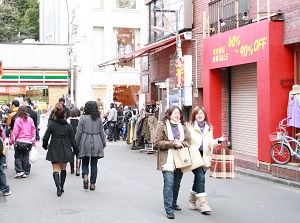
Most shops are opened at 11:00 and closed around 20:00.
And the street is free of vehicle from 11:00 to 18:00 every day.
Omotesando (表参道)
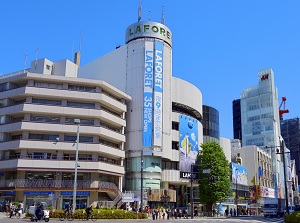
Laforet HARAJUKU
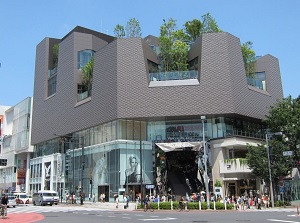
Tokyu Plaza
Omotesando means "main approach to shrine", so the street leads to the entrance of Meiji Shrine.
The last "o" in the word is pronounced long, so it is reas as "Omotesandô".
It is a main road that many cars run.
The section of Omotesando is from Harajuku station to Aoyama street, and the length of the street is about 1 km.
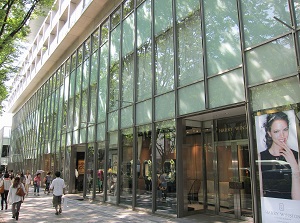
Omotesando Hills
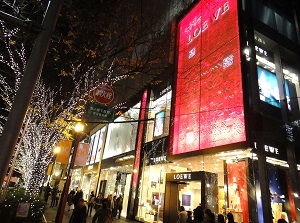
Illumination of Omotesando in winter
Along the street, about 160 zelkova trees are planted and there are many sophistcated shops and buildings.
The following facilities are near Omotesando.
Cat Street
Cat Street is a narrow street to the east of Meiji Street.
The north end is to the east of Harajuku area and the south end is to the north of Shibuya station.
The length is about 1.3 km.
The street was constructed on a small river in 1964, so it is basically a promenade.
Along the street, there are many unique boutiques, cafes and restaurants.
This street is not so popular as Takashita street.
Because this street is not so crowded, you can enjoy the town relaxing.
For that reason, some call this street as Ura-Harajuku (裏原宿, "Another Harajuku" or "Back Harajiku").
Togo Shrine (東郷神社)
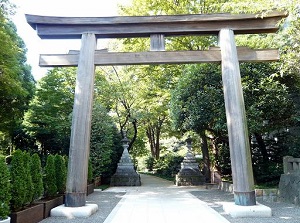
Entrance gate of Togo Shrine
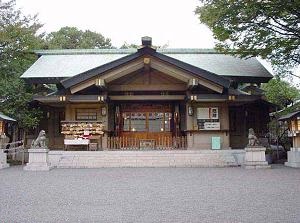
Togo Shrine
Togo Shrine is a Shinto shrine enshrining Togo Heihachiro (1848-1934, Admiral of the fleet in the Imperial Japanese Navy).
The both "o"s in the word "Togo" are pronounced long, so it is read as "Tôgô".
It is located just north of Takeshita street.
He defeated the strong Baltic Fleet of Russia overwhelmingly with his unique tactics on the Sea of Japan in 1905, then it had lead to the victory for the the Russo-Japanese War.
After his death, many people requested the construction of his memorial shrine, then this shrine was built in 1940.
Original shrine had been destroyed by the Great Tokyo Air Raids in 1945, but the current shrine was rebuilt in 1964.
For following his good luck and talent for winning, test-takers and gamblers often visit here.
Ota Memorial Museum of Art (太田記念美術館)
Ota Memorial Museum of Art is a small art museum for ukiyoe (Japanese woodblock prints in the Edo Period), and is located just west of Laforet Harajuku.
Ota Seizo (1893-1977) was the chairman of a life assurance company, and he had collected about 12,000 ukiyoes because he had bemoaned the fact that many excellent ukiyoes had outflowed to foreign countries and Japanese people had been unable to enjoy looking at them in Japan.
Then after his death, this museum was founded in 1980 to open them to the public.
The displaying ukiyoes are changed according to the thema every month.
How to get here
- Harajuku station (JR Yamanote Line)
- Nearest stations of subway.
Meiji-jingu-mae (●C03 Chiyoda Line, ●F15 Fukutoshin Line)
Omotesando (●G02 Ginza Line, ●C04 Chiyoda Line, ●Z02 Hanzomon Line)

